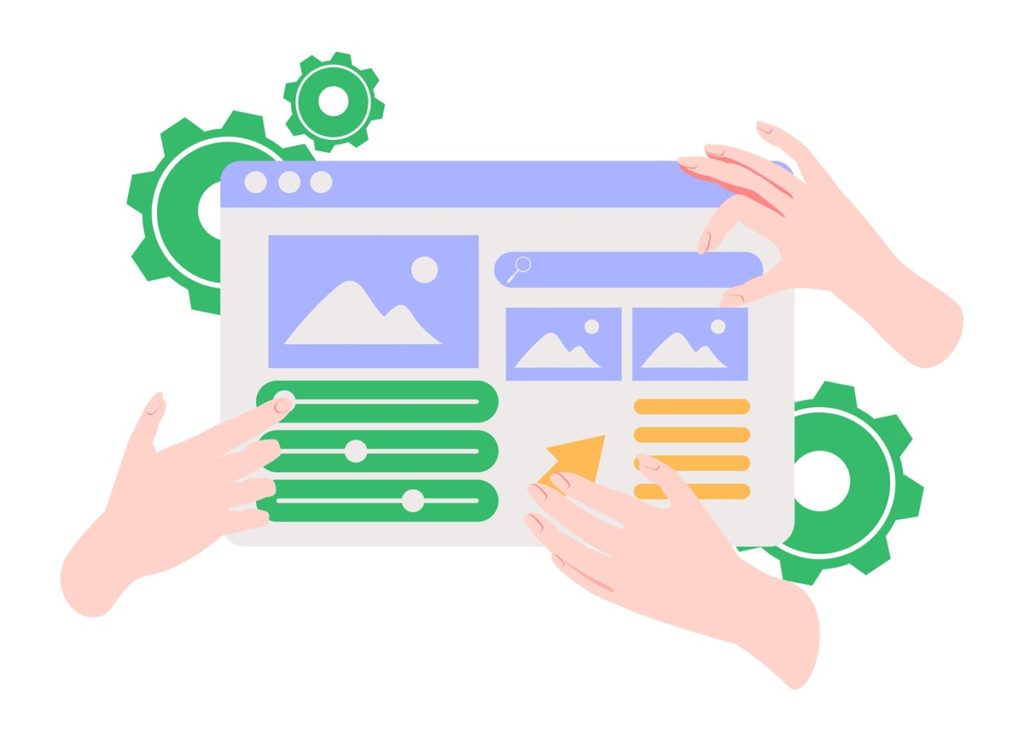Monitoring website content helps ensure it aligns with your target audience’s preferences and generates the outcomes you want to achieve.

In today’s digital marketplace, great content optimized for search engine discovery is a key aspect of an effective content marketing strategy. Simply put, it’s critical to driving sales and growth.
The benefits of effective content marketing are clear. Content marketing:
- builds credibility and authority for your website and brand;
- enhances trust and loyalty with your high-intent target audience;
- helps you rank higher on search engine results pages;
- offers a better return on investment than traditional marketing; and
- makes your website more useful, driving traffic and conversions.
Fast fact: HubSpot reports 70 per cent of companies use content marketing.
High-quality, relevant, engaging content is the starting point. To ensure it is driving tangible results, it’s important to track performance. That’s where website content monitoring comes in.
What is website content monitoring?
Website content monitoring is performing regular reviews and analysis of the performance of individual articles, blog posts, videos and other content you’ve created as well as landing pages across your websites. Metrics include impressions, bounce rates and conversions. Website content marketing also involves the practice of regularly analyzing your website’s performance and user experience. This includes assessing load times and security.
Monitoring performance in this way can provide important insights to improve your content, ensuring it resonates with users and leads them to take the actions you want them to take. It also helps you improve the website experience and achieve your marketing objectives.
Why monitoring website content is important
Website content monitoring will help:
- Improve your site’s visibility/discoverability by using performance metrics to optimize your content for keyword targeting and relevance – essential to achieving higher search engine rankings. Research from Backlinko found a top ranking on search engine results pages (SERPs) results in an average click-through rate (CTR) of 27.6 per cent. Ranking 10th results in a CTR 10 times smaller.
- Ensure you are using the right keywords and optimizing content to best incorporate high-volume keywords. This in turn will drive organic traffic and open the door to more opportunities to drive conversions.
- Match your content to specific user needs and queries. User intent is an important determinant of search engine rankings. When content does not align with user intent, searchers are likely to leave your site, increasing your site’s bounce rate and negatively impacting your search ranking.
- Provide insights into what your competitors are doing. For example, monitoring competitors will help you understand the keywords and content that work best for them and their rankings. Comprehensive competitor analysis will also help you understand industry trends relevant to your business and point to gaps in the market that you can fill.
- Stay current with algorithm updates. This will allow you to be proactive and adapt content to ensure your website complies with the latest recommendations.
- Ensure your website is operating optimally by identifying functionality issues, such as speed, problems with plug-ins or any other technical glitches, including security breaches or unauthorized access to users’ personal accounts.
- Execute regular analyses to identify where to focus your website content and functionality optimization efforts.
What information should you monitor?
There are a few areas to focus on that will help you optimize your website content:
- Title tags, content quality, keywords, internal links and URLs. These are the key elements of on-page search engine optimization (SEO) or on-site SEO. Monitoring these elements and identifying weaknesses will provide insights into how to improve.
- Target keywords. Understand how they are ranking in SERPs and make the necessary adjustments to achieve higher rankings.
- Customer experience on the site. Pay close attention to technical SEO problems, such as broken links, slow speed and poor navigation.
- Brand metrics. These include reach, backlinks, sentiment and domain authority, and mentions across online platforms.
How to monitor website content
1. Define your business objectives and corresponding metrics
What is it you want to achieve with your content marketing initiatives and when do you want to realize these goals? Do you want to expand your audience reach, boost awareness, and increase lead generation and conversions in the next three months? Once you have clear objectives and a deadline, you can identify the metrics you need to monitor. For example, to understand if your blog is attracting your desired target audience, monitor the click through rates of posts. Social media impressions and engagement rates can help you get a handle on brand awareness. When you have target metrics in place, establish benchmarks. This will allow you to track your progress against your defined time frame and point to the areas that need to be improved.
Tip: Compare your blog posts to those of your top-performing competitors. Look at topics, format, length, layout, visuals and design. What’s working for them that can help you get more out of your content?
2. Tap into the power of SEO tools
There are hundreds of free and software-as-a-service SEO tools available to help you ensure visitors to your website get what they’re expecting when they land on a web page and easily find what they’re looking for. These tools can play different roles including: analytics; keyword research; rank checking; local, mobile and on-page SEO; and backlink analysis.
SEO tools provide insights into the performance and effectiveness of your website. They identify problems that are minimizing your visibility on SERPs and show you opportunities to improve. They can also provide a window into your competitors’ SEO strategies and performance, generate thousands of keyword ideas, identify high-converting keywords and track your keyword rankings, conduct SEO audits on your website, and monitor SEO progress.
Tip: Google Search Console is a free tool that can help you identify the keywords that are already earning you good visibility on SERPs and the pages that are ranking for specific keywords. It will also alert you to website issues that may be preventing you from ranking on organic Google searches.
3. Track your brand
Monitoring your brand’s mentions and backlinks across online channels you don’t own provides insight into how people feel about your brand and opportunities to finetune your messaging and enhance your brand’s reputation.
Having a formal system in place to ensure you are routinely monitoring website content will help ensure you are achieving the benefits of a strong content marketing strategy and getting the most out of your creative assets.

